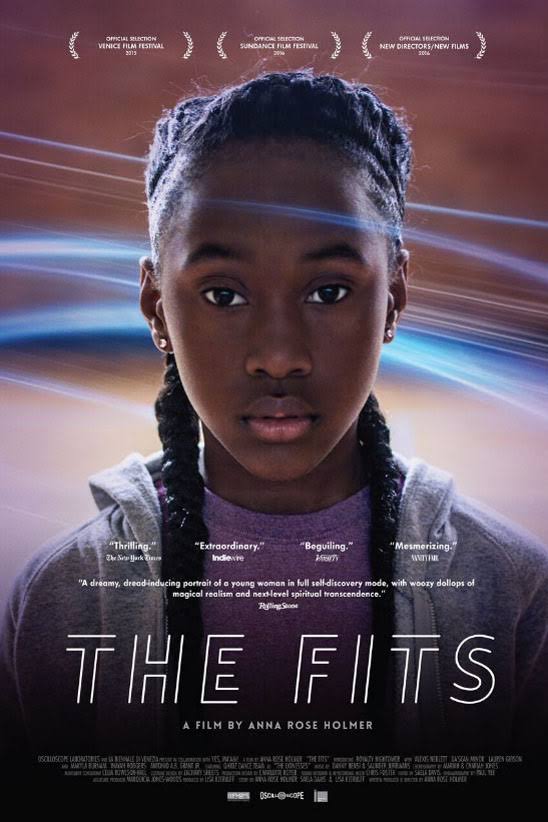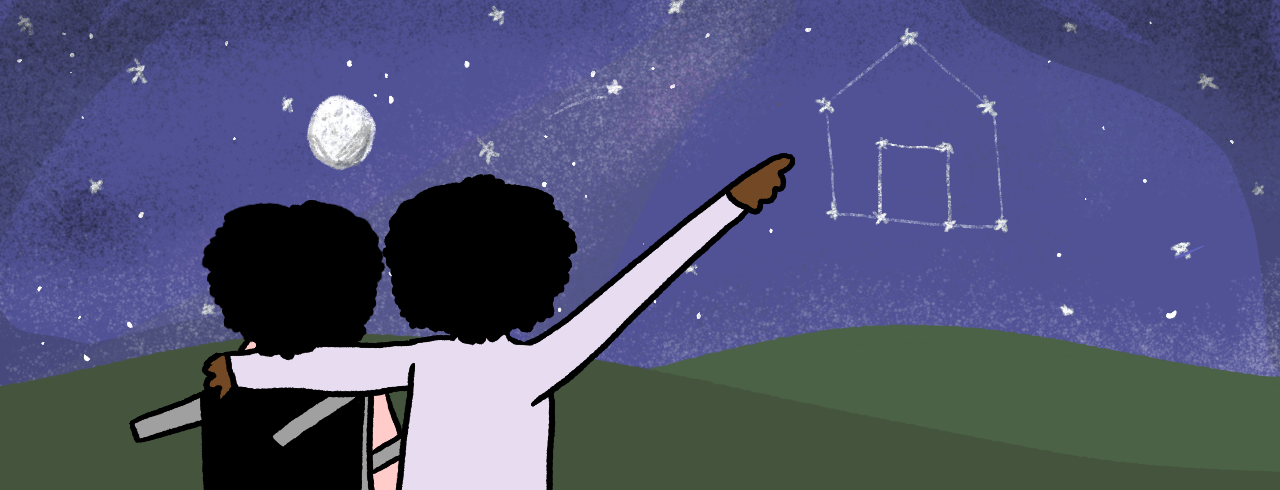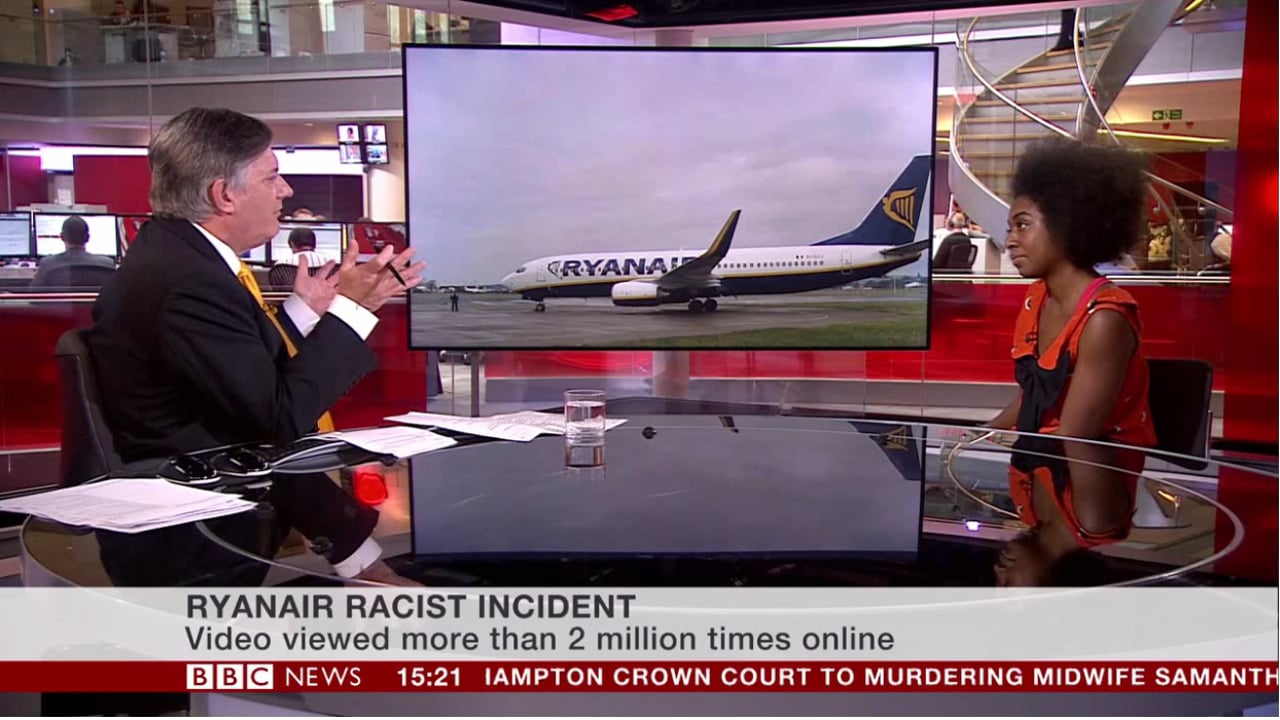
Shiny costumes, jubilant ambiance, synchronised stomping, regimented choreographies and rhythmic routines… Welcome to the highly charged atmosphere of the Lionesses, the dance drill team of the Lincoln Community Center in the West End of Cincinnati, Ohio.
With The Fits, director Anna Rose Holmer proposes a peculiar twist on the usual coming of age story. We follow Toni (Royalty Hightower), an eleven-year-old girl who is close to her older brother, with whom she intensively practices boxing. However, what enthrals Toni most is the all-female dance drill club next door. She discretely peers at the self-assured older girls and scrutinises their feminine moves. Our little boxer dreams of being part of this assertive group of dancers. Or does she? Belonging is a tricky path running between fear and desire. It demands sacrifices. When Toni finally decides to join in, she struggles to find her place. The tension crescendos as unsettling episodes of fainting, trances and convulsions spellbind the girls of the team one by one. Progressively, these altered states of consciousness become initiation rituals leaving Toni wondering just how far she is ready to go to walk in the steps of the Lionesses.
The Fits was a result of Holmer’s desire to create a space for teenage girls “that does not have to do with obtaining external acceptance from a boy”. And, indeed, the movie celebrates an empowered model of girlhood that leads to sisterhood. By doing so, it challenges a popular culture which exalts the depiction of women fighting each other for the attention of a male figure. Do gossiping, jealousy, undercover bullying and denigrating sound familiar? Media are particularly fond of rumours. The speculative fight between Rhianna and Beyoncé over Jay Z galvanised internauts who did not hesitate to put fake videos online.
There is nothing new in this pernicious characterisation. According to Alana Piper, the essentialist idea that women could not foster a true female relationship was already ingrained in Victorian times.
This myth is particularly prevalent for black girls portrayed as having a hypersexualised and aggressive model of femininity. Thus, the creation of counter narratives that celebrate black friendship beyond the male gaze is essential to disrupt stereotypical dominant discourses.
Forget the tired approach to the subject of female dance and the trend for movies with promiscuous cheerleaders initiated in the 1970s. The Fits focuses on female bonding in spite of adversity. The moments of laughter and complicity between Toni and Beezy (Alexis Neblett) playing alone, in the darkness of the recreational centre after hours exemplifies this point. We watch an introverted Toni gradually opening up to the other girls. She learns to let go to embrace female solidarity and the power of the collective embodied in the synchronised movements of the dance drill.
It is worth remembering the history of the drill as an urban contemporary dance form, documented by Brenda Washington Lacey. Since the 1970s, African American girls have been stranded between the normative white middle class cheerleading squads and the masculine militaristic drills. In response, they have created emancipating alternatives by teaming up and inventing their own style of dance. Through commitment, resilience and creativity, they have nurtured their own identity by creating a more complex image of black femininity beautifully exemplified by the elegance and physical strength of Toni.
To convey these emotions, Holmer put her idea into practice. Initially, she did not envision doing the movie in an African American world. She discovered the Q-Kidz dance team on YouTube and immediately called their team captain.
“I wanted to cast a real community of girls for the film. Casting all of the girls from the same real life drill team meant that we could emphasize the authentic sisterhood that young women experience when they bond on a team.”
She worked hand by hand with the Q-Kidz girls and the founder of the club, Marquicia Jones-Woods, who has stood up against the violence and economic deprivation of their surroundings for the last three decades.
If the film has been criticised for its focus on formal qualities, this artistic choice is fully justified to emphasise the director’s intentions. Dialogues are minimal because The Fits is a visceral and contemplative experience beyond words. Its focus on sound design and visual aesthetic is not a limitation. This is an invitation to embrace the feeling of the drill and the way its coordinated rhythmic movements have been a meaningful force in human history to maintain cohesion. Beyond the social, racial and gender issues that the movie raises, Holmer’s message is crucial in our atomized neoliberal world with its rampant individualism.









